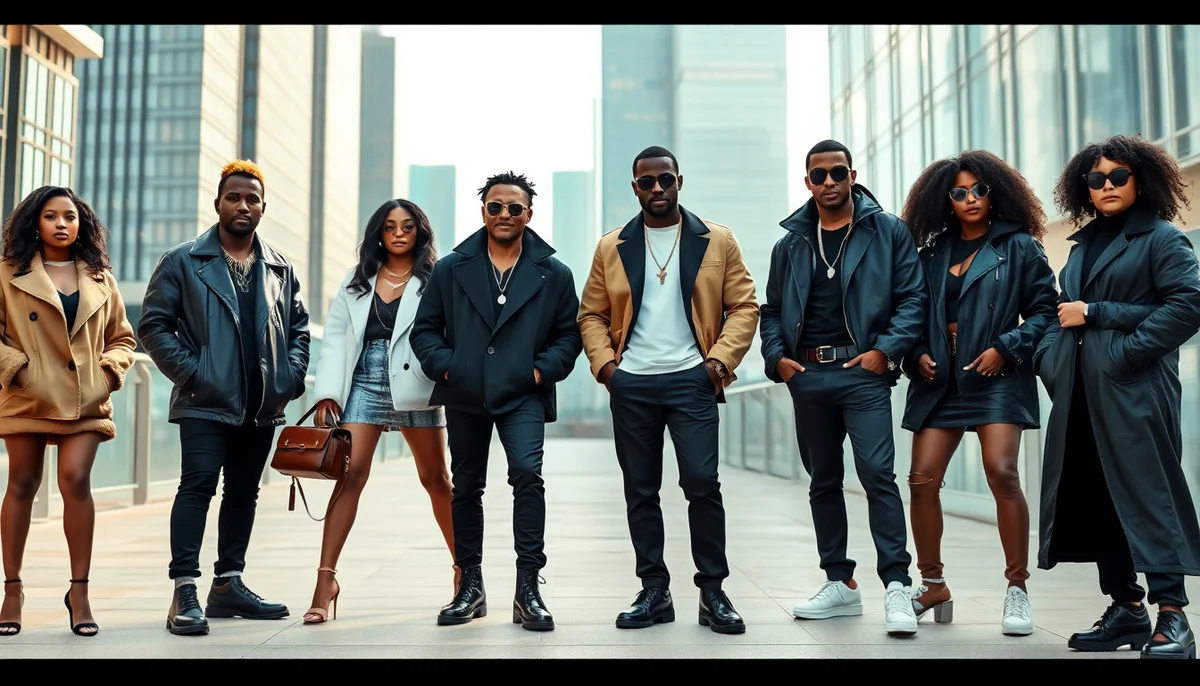
How Urban Fashion Trends Influence Mainstream Culture
|
|
4 min

New Arrivals Fresh Threads: Unveiling the Hottest Urban Fashion Trends for Streetwear...
|
|
4 min
In the ever-evolving landscape of fashion, the influence of urban style has become increasingly undeniable. From the gritty streets of inner cities to the glittering runways of the fashion capitals, the sartorial choices of urban dwellers have long been a driving force in shaping mainstream culture. In this comprehensive exploration, we delve into the intricate relationship between urban fashion trends and their far-reaching impact on the broader societal landscape.
The origins of urban fashion can be traced back to the vibrant subcultures that emerged in the latter half of the 20th century. As marginalized communities sought to assert their identity and express their unique experiences, they turned to clothing as a powerful medium of self-expression. The birth of iconic styles like hip-hop, streetwear, and punk rock not only reflected the lived realities of these communities but also challenged the established norms of traditional fashion.
The rise of hip-hop music in the 1970s and 1980s ushered in a new era of urban fashion. Pioneered by artists like Run-DMC, LL Cool J, and Public Enemy, the hip-hop aesthetic was characterized by oversized jerseys, baggy jeans, and bold, graphic t-shirts. This sartorial language became a visual representation of the resilience, defiance, and pride of the urban youth. As hip-hop gained mainstream popularity, its fashion influence transcended the boundaries of the genre, permeating into the broader cultural consciousness.
Parallel to the rise of hip-hop, the streetwear movement emerged as a distinct urban fashion subculture. Originating from the skate and surf communities, streetwear embraced a casual, utilitarian aesthetic that prioritized comfort and self-expression. Brands like Supreme, Stüssy, and BAPE became synonymous with the streetwear ethos, offering a fresh alternative to the polished, high-fashion mainstream.
The punk rock movement, with its rebellious spirit and DIY attitude, also left an indelible mark on urban fashion. The safety-pin-adorned, ripped-and-safety-pinned aesthetic of punk seamlessly merged with the gritty, street-inspired styles of urban communities. This fusion gave rise to a new generation of fashion rebels who used their clothing as a means of social and political commentary.
As urban fashion trends gained widespread recognition, they began to infiltrate the mainstream, transforming the way we perceive and consume fashion. This process of mainstreaming has had a profound impact on various aspects of our cultural landscape.
The rise of urban fashion has played a significant role in the democratization of the fashion industry. By challenging the exclusivity and elitism often associated with high fashion, urban styles have made fashion more accessible and inclusive. Streetwear brands, in particular, have disrupted the traditional fashion hierarchy, empowering individuals to express their personal style without the constraints of traditional sartorial norms.
The mainstreaming of urban fashion has also led to the blurring of boundaries between high and low fashion. Luxury brands have increasingly embraced the influence of urban aesthetics, collaborating with streetwear labels and incorporating urban-inspired elements into their collections. This cross-pollination has resulted in a more fluid and dynamic fashion landscape, where the lines between the elite and the everyday are constantly being redrawn.
The impact of urban fashion on mainstream culture extends far beyond the realm of clothing. The visual language and cultural signifiers of urban style have permeated into various aspects of our lives, from music and art to advertising and social media. The ubiquity of urban fashion has transformed the way we perceive and engage with popular culture, shaping our collective understanding of style, identity, and self-expression.
As urban fashion continues to evolve, its influence on mainstream culture shows no signs of waning. The constant reinvention and adaptation of urban styles have kept them at the forefront of the fashion industry, challenging traditional norms and inspiring new generations of trendsetters.
One of the most notable developments in the urban fashion landscape is the emergence of "streetwear luxury." Luxury brands have increasingly embraced the streetwear aesthetic, blending high-end materials and craftsmanship with the casual, youthful appeal of urban styles. This fusion has created a new class of fashion that caters to a growing demographic of consumers who seek a balance between exclusivity and accessibility.
The proliferation of social media has also played a crucial role in the mainstreaming of urban fashion. Platforms like Instagram and TikTok have provided a global stage for urban fashion enthusiasts to showcase their personal styles, share trends, and engage with like-minded communities. This digital amplification has accelerated the dissemination of urban fashion, allowing it to reach and inspire a wider audience.
As the fashion industry grapples with the pressing issue of sustainability, urban fashion has emerged as a potential catalyst for change. Many urban-inspired brands have embraced eco-friendly practices, such as the use of recycled materials and ethical manufacturing processes. This intersection of urban style and sustainability has the potential to redefine the future of fashion, promoting more conscious and responsible consumption.
The influence of urban fashion on mainstream culture is undeniable. From the gritty streets to the glittering runways, the sartorial choices of urban dwellers have left an indelible mark on the way we perceive and engage with fashion. As urban styles continue to evolve and adapt, their impact on the broader cultural landscape will only continue to grow, shaping the way we express our individuality and challenge the status quo.